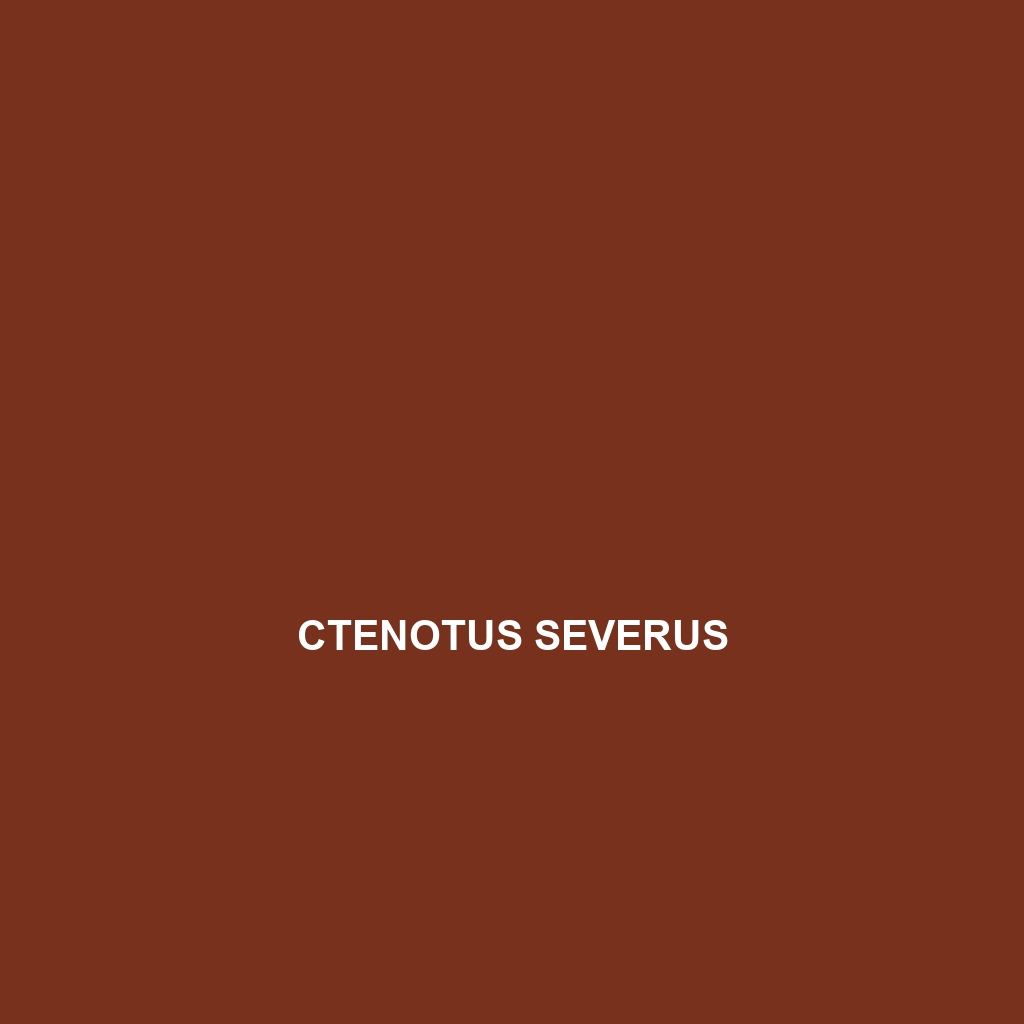Ctenotus severus: A Comprehensive Species Description
Common Name: Ctenotus severus
Scientific Name: Ctenotus severus
Habitat
Ctenotus severus is primarily found in the arid and semi-arid regions of Australia, particularly in the central and western areas. This species thrives in environments with sandy or loamy soils, often inhabiting open woodlands, grasslands, and scrublands. The lizard prefers areas with ample ground cover, which provides protection from predators and aids in thermoregulation.
Physical Characteristics
Ctenotus severus is a medium-sized skink, typically measuring between 10 to 15 centimeters in length. They are characterized by their elongated bodies, with a slender shape and short limbs. The coloration varies from light brown to gray, often adorned with dark stripes or markings that provide excellent camouflage against the ground. Distinctive features include a smooth, shiny scale texture and a slightly flattened head, making them easily recognizable among other skinks.
Behavior
This species displays a range of behaviors that are particularly intriguing to researchers and enthusiasts alike. Ctenotus severus is diurnal, active during the day, and is known for its quick movements. They are often seen basking in the sun, a behavior essential for maintaining their body temperature. Additionally, they exhibit burrowing tendencies, often seeking refuge in sandy substrates to escape extreme weather conditions.
Diet
The diet of Ctenotus severus primarily consists of small invertebrates, including insects, worms, and arachnids. They are opportunistic feeders, hunting their prey with agility and precise movements. This skink’s feeding habits play a crucial role in controlling insect populations within their habitat, assisting in the overall ecological balance.
Reproduction
Ctenotus severus has a fascinating reproductive cycle, typically breeding during the warmer months of the year. Females are known to lay up to 5-10 eggs, which they bury in soft soil to provide protection for the developing offspring. The eggs generally incubate for several weeks before hatching, with young lizards emerging fully formed and ready to begin their independent lives.
Conservation Status
As of the latest assessments, Ctenotus severus is classified as ‘Least Concern’ on the IUCN Red List. However, habitat loss due to agricultural expansion and urban development poses potential threats to their populations. It is essential to monitor their habitats and implement conservation measures to ensure their continued survival.
Interesting Facts
Ctenotus severus is often admired for its remarkable ability to adapt to varying environmental conditions. Their excellent camouflage not only protects them from predators but also enables them to ambush their prey effectively. Additionally, these skinks communicate through subtle body language, displaying territorial behaviors that are interesting to observe.
Role in Ecosystem
Ctenotus severus plays a vital role in maintaining the ecological balance within its habitat. As a predator of various insects, it helps control pest populations, while also serving as prey for larger animals, thus contributing to the food web. Their presence indicates a healthy ecosystem, illustrating the intricate connections among species within their environment.
